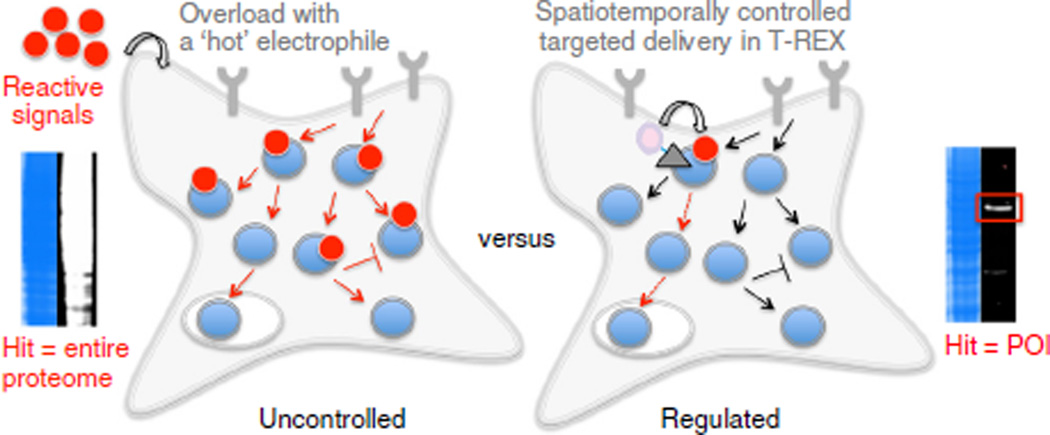Figure 1.
Strategies for studying cellular redox responses. The predominant small molecule–based strategy for studying cellular redox responses typically constitutes bolus dosing of a cell with reactive signals (left panel). T-REX offers a complementary and previously not recognized ‘on-demand redox targeting’ approach to the study of gain-of-function or dominant loss-of-function consequences of specific redox modifications with precise timing and target specificity (this protocol, right panel). Blue circles designate cellular proteins and red dots are reactive endogenous redox signals. All arrows illustrate representative redox pathways and trajectories (the regular and T-shaped arrows indicate direct/indirect activation and inhibition, respectively). Red arrows signify those that are being perturbed under the respective conditions. The gray triangle with the purple sphere designates a photocaged precursor (see Fig. 2 for chemical structure), and the gray Y-shaped objects represent cell-surface receptors. The accompanying gel-based data demonstrate the specificity in terms of targeted modification achieved in T-REX, which also offers temporal control through light-driven signal delivery. See Figures 2 and 3 for approaches to probe downstream response.

